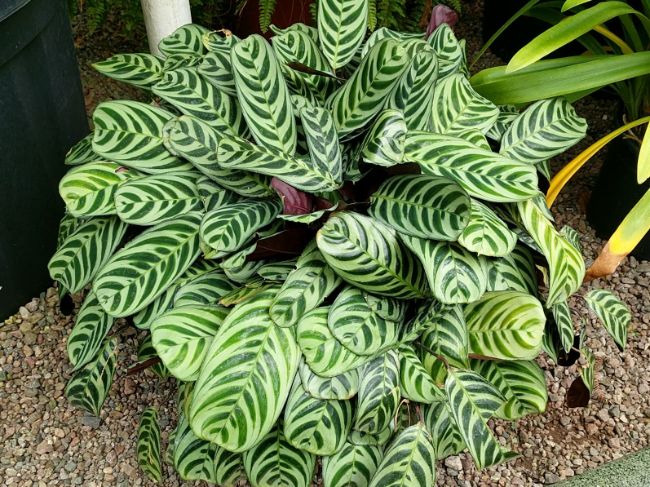Successfully keeping a tropical plant that is native to the rainforests of Brazil in your home might seem like a challenge, but it can be relatively easy if you know what this plant needs to thrive. The Ctenanthe plant, also known as the Never Never plant, is an evergreen plant with unique, variegated foliage that can add color and liveliness to any home interior.
How to care for a Ctenanthe Plant? Grow your never never plant in well draining soil, provide bright, indirect light and keep the soil moist but not waterlogged. Maintain high humidity, keep temperatures between 55-85F and fertilize monthly during the growing season with half strength fertilizer.
The Never Never plant, when cared for correctly, can create a beautiful and unique touch to your home. Unfortunately, many homeowners and garden enthusiasts don’t know how to create the most hospitable environment and growing conditions that will allow this plant to thrive. Read on and I´ll give you all the important information you need to allow your Ctenanthe Plant thrive.
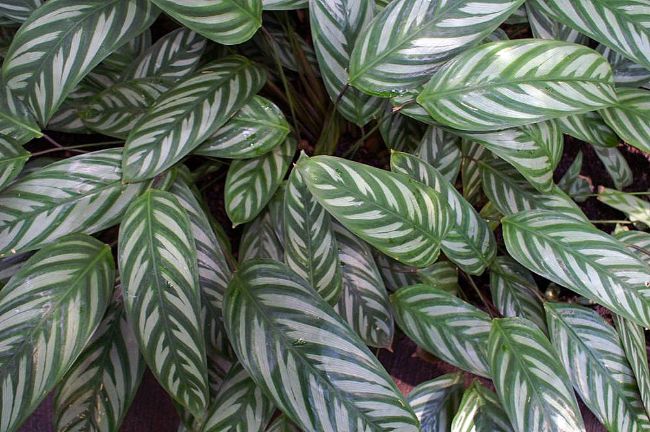
How To Care For Your Never Never Plant
The silver and green striped foliage of the Never Never plant will bring a touch of the tropics into your home, even if you live in areas where the long and cold winters are a far reach from the sun and heat of the rainforest.
The Never Never Plant is renowned for the lance or spear-shaped leaves whose dark green foliage are punctuated by sliver stripes or bands. These silver bands are what also give the Never Never plant its other common name: The Brazilian Snow Plant. Though small flowers may appear, most home gardeners keep the plant for its impressive foliage display.
This tropical evergreen plant requires specific growing conditions that mimic the humidity, temperature, light levels, and soils of its native tropical rainforest habitat. Without these conditions, the plant can still grow, but will not fully develop the unique foliage coloration which is what is most prized by plant lovers around the world.
- Origin: Rainforest regions of Central and South America
- Light Requirements: Bright, indirect light. Avoid excessive direct sunlight.
- Watering: Maintain moist soil, but avoid waterlogged conditions. Water once the top of the soil feels dry.
- Soil: Nutrient rich, well-draining potting mix. Equal parts potting soil, peat and perlite works well.
- Temperature: 55-85°F (13-29°C).
- Fertilizer: Balanced, water-soluble fertilizer applied monthly while the plant is actively growing. This is the fertilizer I use.
- Humidity: Medium to high humidity. Leaf curling and brown tips will develop in low humidity.
- Flowering: Small, insignificant white/yellow flowers appear at intervals through the year when grown in good conditions.
- Pruning: Only needed to control size and remove dead foliage. Plant will spread out if allowed to.
- Propagation: By division or seed.
- Re-Potting: Every 1-2 years in springtime
- Popular Varieties: C. burle-marxii, C. oppenheimiana, C. marantifolia.
- Diseases and Pests: Fairly resistant. Botrytis develops in excessively moist conditions. Can get mealybugs, thrips and spider mites.
- Toxicity: Generally safe for children and pets.
Never Never Plant Overview
The Ctenanthe Plant belongs to the genus of flowering plants of the family Marantacea. This plant family are all evergreen perennials and are primarily native to the tropical rainforest regions of Brazil, though they can also be found in certain areas of Central America, such as the rainforest habitat of Costa Rica. Outside of their native habitat, these plants are also widely grown as a unique ornamental due to their multi-coloured foliage.
Because they are tropical plants, they are highly susceptible to frosts, and can suffer irreparable damage whenever outside temperatures drop below 55°F, or 13°C.
Most growers in North American, then, grow the Never Never plant in containers, and move them outside from late spring after the risk of frost is gone. They are then moved indoors during the late fall and winter periods.
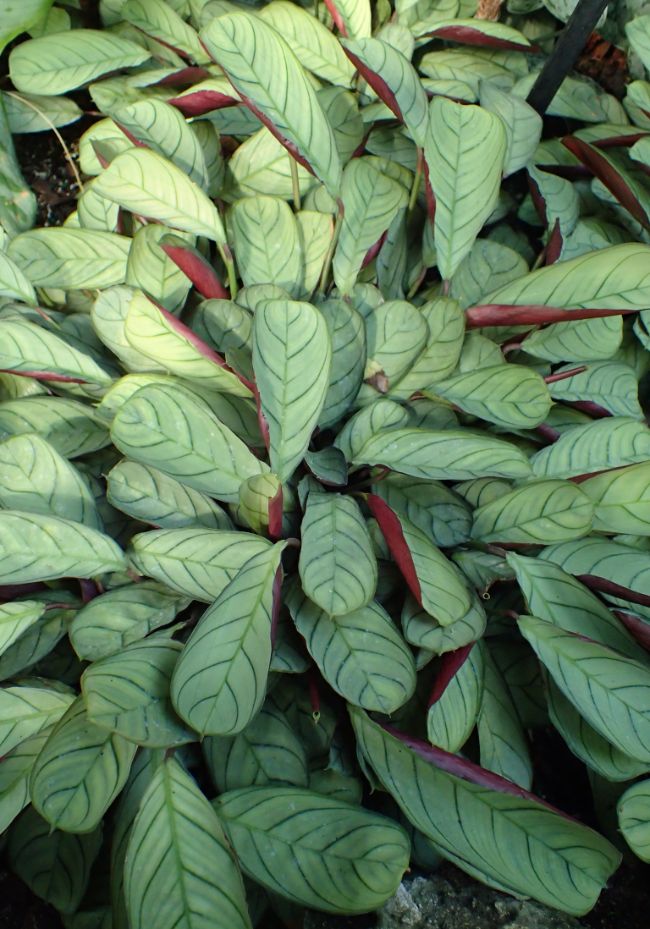
Ctenanthe Characteristics
When given the right growing conditions, the Never Never plant can grow up to seven feet in size (just over 2 meters), spreading horizontally, while not rising more than 12-18 inches in height. They develop long oval leaves up to 16 inches (40 centimetres) in length, that are marked by their beautiful silver patterns.
The exact size of the plant will largely depend on the size of the container to allow for optimum root growth. Even in small containers, however, the species of plants in the Ctenanthe family can easily grow to several feet in size.
In most cases, a dark maroon color will develop on the underside of the leaves for added coloration and texture. Because of the compact growth habits of this plant, little pruning is required, making this an easy-to-care-for household plant.
Light Requirements For The Never Never Plant
One of the most important requirements to successfully grow the Never Never plant is to create an environment that offers bright, but indirect light. When considering where to plant your Never Never plant, think of the rainforest ecosystem where these plants thrive. Long days of light are the norm, though the thick forest canopy offers shading which reduces the amount of direct light.
Incorrect lighting can lead to foliage problems which will negatively affect the beauty for which the plant is most widely appreciated. Without a steady and constant source of indirect but bright light, the color patterns on the leaves will dramatically change.
With too little light, the newly emerged foliage will be solid, dark green in color, and the attractive, spear-shaped, silver patterns will either be unnoticeable or absent all together. On the other side of the coin, too much light will cause fading to occur, thus dampening the attractiveness of the bright hues.
If certain windows in your home are regularly shaded by trees, you can place your Ctenanthe plant in those windows. You will want to avoid windows or areas of your home where the hot, direct sun from the south or west is continuously beating down on the plant.
In most cases, an east or north facing window is the best spot for a Never Never plant (if you live in the northern hemisphere).
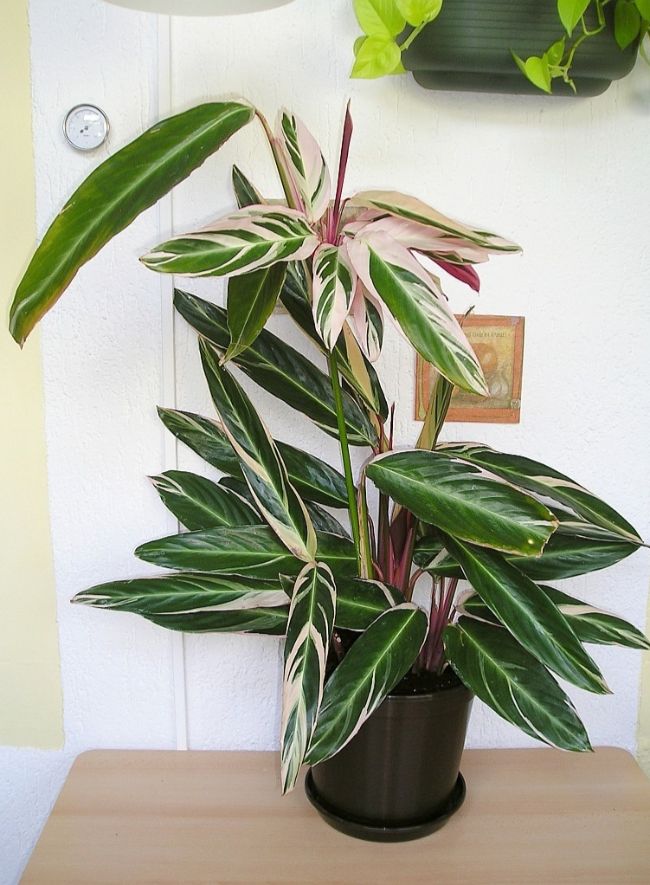
Water Requirements For The Never Never Plant
As with all plants, correct watering is essential to help the plant thrive. While the Ctenanthe species of plants is generally tolerant of different soil moisture levels, you will want to make sure to never let the plant dry out. Water thoroughly once the top of the soil feels dry.
Continue adding water until it drains out of the drainage holes in the pot. I tend to water my smaller houseplants at the sink, allowing excess water to drain out of the pot before putting them back in position. If using a drip tray, make sure to empty this after a few minutes to avoid the roots sitting in water.
Continuous overwatering can cause root rot. You can avoid this by monitoring the condition of the plant and the moistness of the potting soil to decide when watering is required, rather than relying on a watering schedule. Read this article for some great pointers on how to identify when your houseplants need water.
Never Never plants can develop brown leaf tips if you regularly use tap water for irrigation that contains high levels of chlorine or fluoride. Ideally, you should try to utilize filtered water, distilled water or captured rainwater.
Temperature Requirements For Ctenanthe Plants (Never Never Plant)
Despite being native to the Amazon rainforest, the Never Never Plant will still be able to survive, and even thrive, at lower temperatures. If you live in an area with relatively cool summers, as long as the temperatures remain above 55°F (13°C), your plant should be okay.
Because this plant likes temperatures between 55-85°F, it will adapt to normal indoor temperatures. For people who live in areas with cold winters, you will want to make sure to avoid leaving the plant outside when hard frosts are a threat as one night of hard frost could cause irreparable damage.
Soil And Fertilizer For Ctenanthe Plants (Never Never Plant)
Most potting soils will work perfectly for your Never Never plant, though you will want to make sure to find one that is well draining to avoid the problem of water logging the root zone of the plant.
If you have re-potted or re-planted a Ctenanthe plant, you will want to wait at least 6 weeks before fertilizing to allow the root system to establish. Once established, however, you should apply a balanced, water soluble fertilizer at half of the recommended strength on a monthly basis. This is what I use for many of my houseplants.
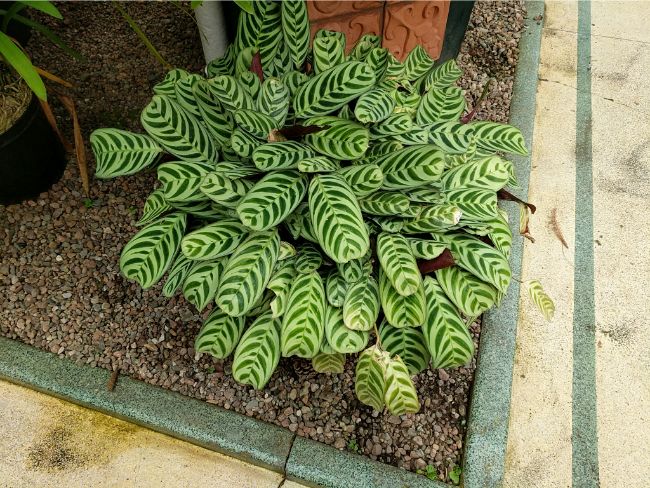
Pests And Disease Considerations For The Ctenanthe Plant
The Never Never Plant is generally resistant to a wide variety of diseases and pests. In some areas, however, mealybugs, thrips and spider mites can be a problem.
Mealybug infestations can lead to sticky, white residue on the plant while spider mites can lead to yellow, blotchy-looking leaves that reduce the attractiveness of the foliage.
You should treat any bugs as soon as they appear. I’ve written another article covering some of the best natural options for getting rid of houseplant bugs.
Botrytis, also known as Gray Mold, can also affect the Never Never plant when too much moisture is present. You can avoid this common fungus by maintaining optimum humidity levels and never allowing the soil mix to become waterlogged.
Changes to the foliage of the Never Never plant, such as curling leaves or drooping leaves can be caused by excess heat, excess light, low humidity, or under-watering.
If you see brown tips on the leaves, or if the entire plant is turning yellow, the plant might need more nutrients or a change it your irrigation practices. Correct care for the plant is usually all that is needed to return the foliage to its vibrant green and silver hues.
Propagation Considerations For The Never Never Plant
The Never Never plant is relatively easy to propagate by division of the adult plant. This should ideally be done in spring, as the plant is starting to grow strongly.
Popular Ctenanthe Species
Ctenanthe species, including the C. burle-marxii (known as the fishbone prayer plant for its unique color variations), the C. oppenheimiana (known for its unique cream-colored stripes), and the C. marantifolia (which includes beautiful golden striped patterns) are popular choices.
Is Ctenanthe Toxic?
In terms of toxicity, almost all of the plants in the Ctenanthe species are listed as non-toxic and are not poisonous to your pets. In some cases, individual allergic reactions can occur, though they are widely considered to be minor, at worst.

